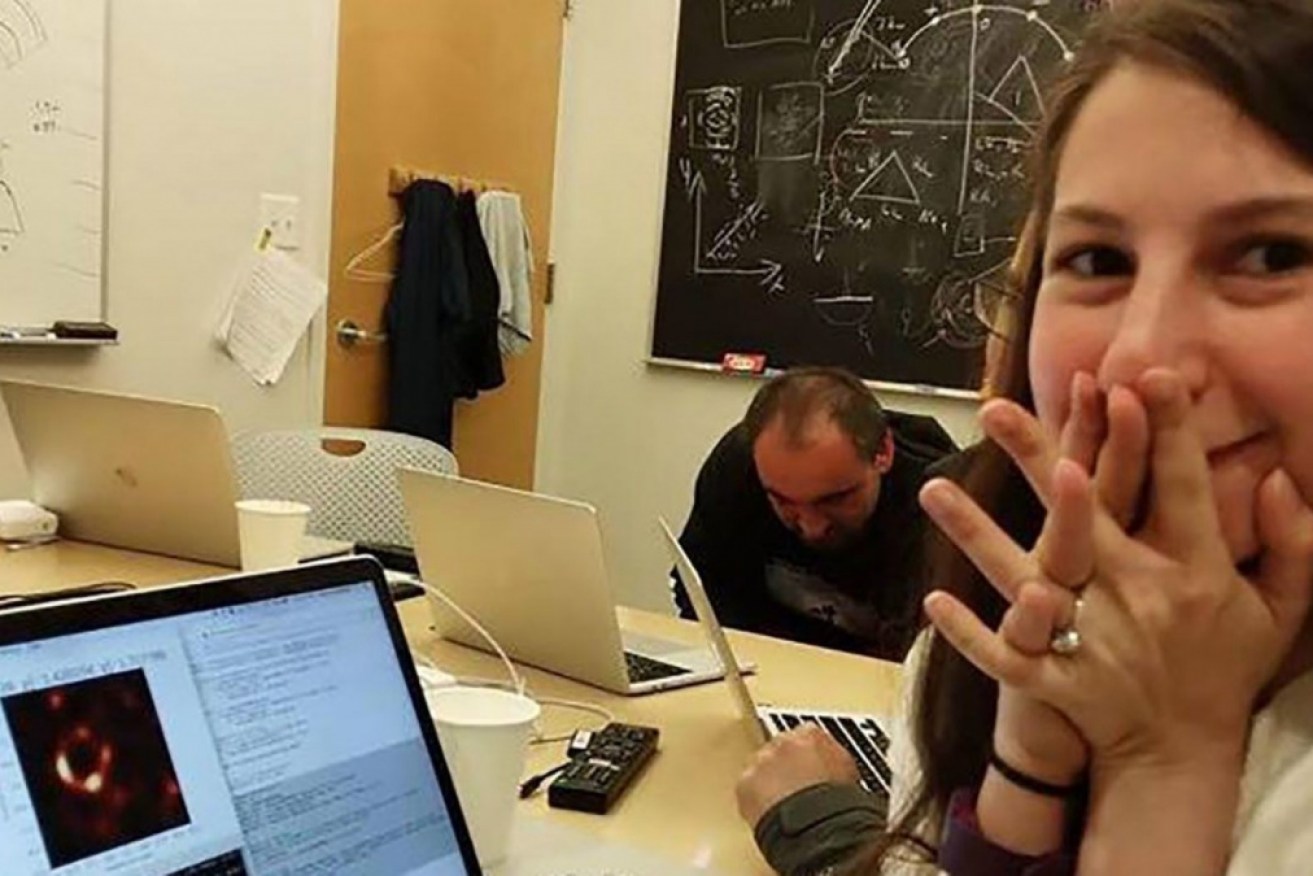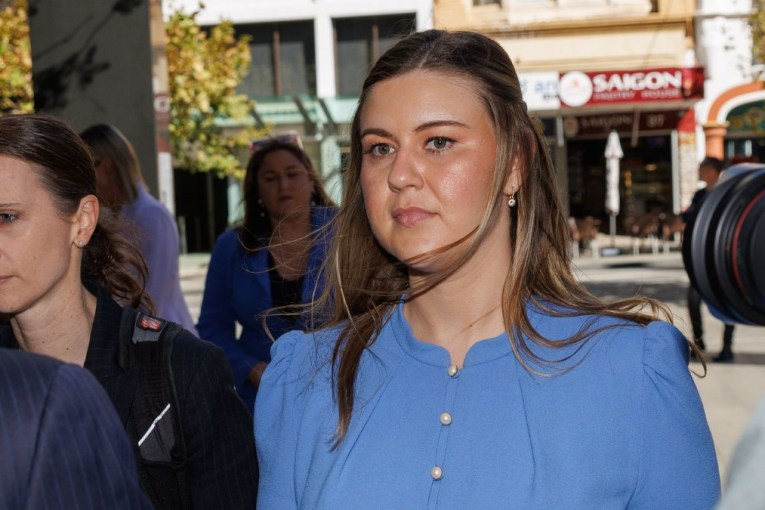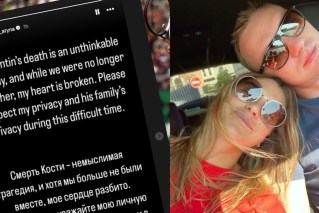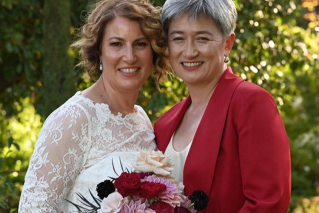Social media trolls target black hole photographer Katie Bouman

American science and engineering graduate Katie Bouman has been trolled on social media. Photo: Facebook
Colleagues of the computer scientist whose photo went viral after a team of researchers produced the world’s first photograph of a supermassive black hole are coming to her defence after she was attacked by social media trolls.
Katie Bouman posted a photo of her reaction to witnessing the processing of an image of a black hole, which was screen-shotted, copied and then tweeted from the social media account of the Massachusetts Institute of Technology’s Computer Science and Artificial Intelligence Lab.
Dr Bouman’s team, along with three others, independently processed shared data to render a separate image in trials designed to allow the teams to compare their results and produce a final, unbiased product.
It is believed the photo that went viral showed her reaction to her team’s image.
Here's the moment when the first black hole image was processed, from the eyes of researcher Katie Bouman. #EHTBlackHole #BlackHoleDay #BlackHole (v/@dfbarajas) pic.twitter.com/n0ZnIoeG1d
— MIT CSAIL (@MIT_CSAIL) April 10, 2019
Dr Bouman was a PhD student at MIT, with the social media team highlighting the involvement of one of the university’s own in the project – which is common for universities.
Her image, which embodied the pure glee and awe many were feeling about the momentous development in science, was retweeted more than 17,000 times.
The photo’s reach did not stop there.
Another repost of it was retweeted 155,000 times.
Soon, Dr Bouman’s excited expression was splashed on news sites around the world.
A story from the ABC, for example, featured her image and referred to her as “the computer scientist whose algorithm made the historic image possible”.
“This code was a key step in synchronising the signals from eight scattered radio telescopes…” the story said.
Another image of Dr Bouman, this time featuring her with the stacks of hard drives containing the data from the project, went viral after it was compared to a similar image of revered computer scientist Margaret Hamilton.
That single tweet was retweeted more than 19,000 times, a figure that does not count the multitude of different posts containing that image.
Left: MIT computer scientist Katie Bouman w/stacks of hard drives of black hole image data.
Right: MIT computer scientist Margaret Hamilton w/the code she wrote that helped put a man on the moon.
(image credit @floragraham)#EHTblackhole #BlackHoleDay #BlackHole pic.twitter.com/Iv5PIc8IYd
— MIT CSAIL (@MIT_CSAIL) April 10, 2019
Human face of a mind-boggling project
Dr Bouman’s wholesome reaction struck a chord with many, despite there being more than 200 people who contributed to the project.
The people behind the black hole image. Here are (almost) all the heroes of the @ehtelescope. (From our last collaboration meeting in Nijmegen, Nov. 2018.) #EHTblackhole pic.twitter.com/ixegKTo5Lb
— Heino Falcke (@hfalcke) April 11, 2019
Many social media posts neglected to mention Dr Bouman was part of a team of dozens and dozens of bright minds, or that her code was “a key step in synchronising the signals from eight scattered radio telescopes” to produce the black hole image.
While many praised Dr Bouman for her role, a section of the internet interpreted the researcher’s newfound internet fame as an attempt on her part to take credit for the entire project.
Shortly after the story broke, Dr Bouman told The New York Times she had to turn off her phone because of the overwhelming number of messages she was receiving.
“I’m so glad that everyone is as excited as we are and people are finding our story inspirational,” she said.
“However, the spotlight should be on the team and no individual person.
“Focusing on one person like this helps no one, including me.”
MIT clarifies origin of black hole image
She posted a photo of some members of the team who worked on the project with her on Facebook, praising their efforts.
“No one algorithm or person made this image, it required the amazing talent of a team of scientists from around the globe and years of hard work to develop the instrument, data processing, imaging methods, and analysis techniques that were necessary to pull off this seemingly impossible feat,” she said.
The MIT social media account posted a clarification thread, making it clear Dr Bouman was not billing herself as a sole creator of the black hole image.
— MIT CSAIL (@MIT_CSAIL) April 14, 2019
Yet, this acknowledgement did little to stop the trolls.
Some set up fake social media accounts pretending to be Dr Bouman, while videos on YouTube ridiculed her for only doing “6 per cent of the work”.
Two days later, a report from The Verge said Dr Bouman was no longer speaking to the media.
Colleagues speak up
This came after a Reddit post, which featured a photo of one of Dr Bouman’s collaborators, Andrew Chael, and falsely claimed he had written 850,000 of the 900,000 lines of code required for the algorithm, went viral.
Mr Chael, a PhD candidate, took to Twitter to blast the people using his story to smear Dr Bouman.
“While I wrote much of the code for one of these pipelines, Katie was a huge contributor to the software; it would have never worked without her contributions and the work of many others who wrote code, debugged, and figured out how to use the code on challenging EHT data,” he said.
“While I appreciate the congratulations on a result that I worked hard on for years, if you are congratulating me because you have a sexist vendetta against Katie, please go away and reconsider your priorities in life.”
He also debunked the claim he wrote 850,000 lines of code.
“There are about 68,000 lines in the current software, and I don’t care how many of those I personally authored,” Mr Chael said.
Astrophysicist Kazu Akiyama, who also contributed to the mammoth project, said the vitriol targeted towards Dr Bouman was based on misleading information posted on social media.
“Many articles implied that her algorithm from 2015 was specifically used to get the first reconstruction of a black hole when many of us generated the first images simultaneously with many different techniques,” Dr Akiyama said.
“She is not at fault for these tweets; she was not involved in these tweets and she has nothing to do with them.”
Dr Akiyama explained that Dr Bouman and Mr Chael co-led one of four imaging teams.
He said that while her algorithm was not used in the end, her work was “foundational” in building the imaging pipelines.
“Her contribution to the whole imaging group is indeed tremendous,” Dr Akiyama said.








